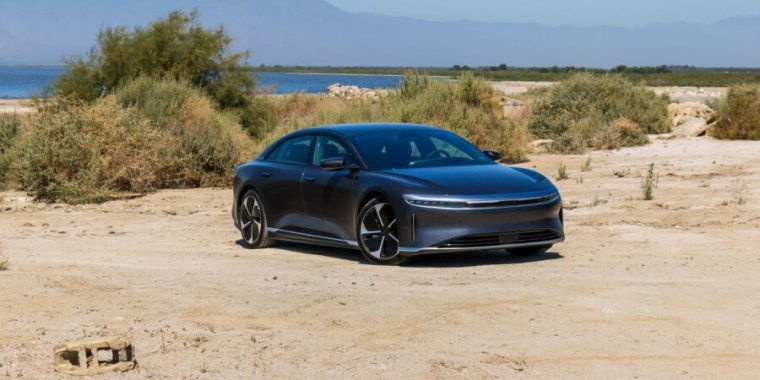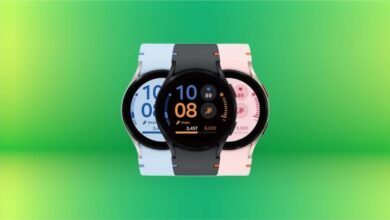The Lucid Air Pure review: Lower weight, better steering, amazing efficiency

Evan Willams
It’s the lowest-priced entry from an automotive startup, so I wasn’t expecting the world.
Too many EV startups do a great job on the electric side but not so great on the car side of the equation—and sometimes they don’t do either particularly well. But the Air Pure wasn’t just good; it was excellent. It’s the rare car I had trouble finding flaws with, even after it locked me out in a parking lot.
The Pure RWD is the filtered version of the Lucid Air. It doesn’t have two motors, and it doesn’t offer a glass roof. It doesn’t have more horsepower than a Lamborghini, and it definitely doesn’t offer the 512 mile (824 km)) range of the Air Grand Touring.
What it has is a single motor mounted in the rear that delivers 430 hp (320 kW). It’s not enough for rip-your-face-off EV acceleration, especially since I used the gentler Smooth drive mode for most of my time in the Air, but it is enough for a 0–60 run in a claimed 4.5 seconds, a number that just a few years ago would have been called supercar performance.
The Pure’s real advantage is on the scales. 4,564 lbs (2,070 kg) is no featherweight, but it is 424 lbs (192 kg) lighter than an Air Touring and 762 pounds (364 kg) lighter than an Air Grand Touring. The diet and the lack of a front-mounted motor pay dividends in almost every part of the experience.
Less is more
A lower weight and one fewer motor to spin are a boon for efficiency. The Grand Touring has an official efficiency estimate of 4.0 miles/kWh (15.5 kWh/100 km), the Touring with 20-inch wheels gets 4.15 (15 kWh/100 km). The official estimate for the model year 2024 Pure on the 20-inch wheels of my test unit is 4.48 miles/kWh (13.9 kWh/100 km).
That increases to 4.74 miles/kWh (13.1 kWh/100 km) with the 19-inch wheels, and the model year 2025 Air Pure can hit 5 miles/kWh (12.4 kWh/100 km) with the smaller wheels, Lucid just announced.
-
The Air has a distinctly American look, but it’s an elegant one.
Evan Williams -
The Air is the most aerodynamic car on sale, with a drag coefficient of just 0.197.
Evan Williams -
20-inch wheels sap range somewhat.
Evan Williams -
In case you forgot.
Evan Williams -
The sloping rear can impinge on headroom for some.
Evan Williams
In 300 miles (482 km) of 70 mph (112 km/h) on interstate highways driving around Los Angeles, which included a trip through the hilly Cajon Pass, I saw 4.8 miles/kWh (12.9 kWh/100/km). In lower speed but max-AC driving around Palm Springs and through Joshua Tree National Park with triple-digit temperatures and liberal use of the max-power Sprint Mode, I saw 4.0.
The highest indicated range I saw was 386 miles (621 km). That compares favorably with the 394-mile (534 km) official estimate because that full charge was sitting in the sun on a 93°F morning. It was hot, but at least the heat pump AC was up to the task; while the day kept getting hotter, my efficiency numbers didn’t drop.
The Air Pure doesn’t have the headline-grabbing 350 kW charging of the Grand Touring, but it is still capable of pulling down up to 250 kW. It also still has the Plug and Charge capability of the rest of the lineup, and it worked seamlessly to connect to the three Electrify America chargers I tried in my time with the car.
I saw a peak of 200 kW on my charge attempts, but all were on near triple-digit hot days and starting from a SoC above 25 percent at stations where every 350 kW plug was occupied. Lucid claims 17 minutes to get 200 miles (321 km) of charge (with the 19-inch wheels, my tester had 20s), which is slower than the 12 minutes of the Grand Touring but still quick.
A lower weight is good for the ride, too. The Pure has the same adaptive damping suspension with steel springs as the other trims and the always firm but never stiff ride was a dream. LA-area freeways are far more cratered than they have any right to be for a city that doesn’t see freeze-thaw cycles, but the Air Pure just soaks bumps up.
I took the Air chasing canyons and looking for the eclectic sites you can only find in the desert, like a home built underneath the largest rock in North America beside a runway meant for UFOs to land. On those twisty canyon roads, the Air’s steering was a delight. It firms up well under load, and while we’ve criticized a lack of feedback from the two-motor Grand Touring in the past, the RWD Pure doesn’t have this issue.
No front motor means less weight acting on the front suspension, and it also means that the tires (and the steering rack) aren’t made to deal with the forces of acceleration and cornering at the same time. While either change is good for the driver, together, they make the car more fun to drive.
Source link




